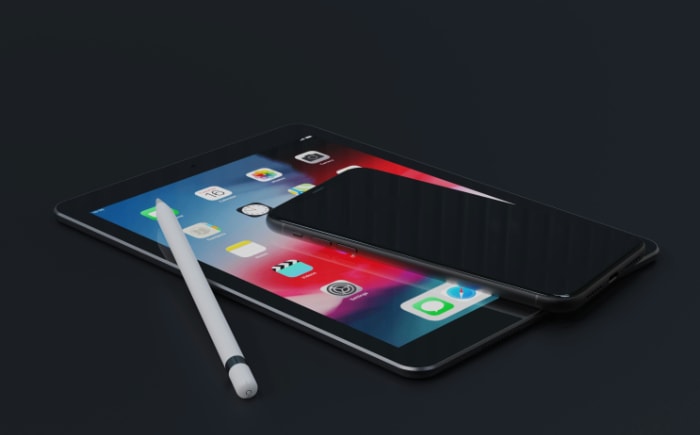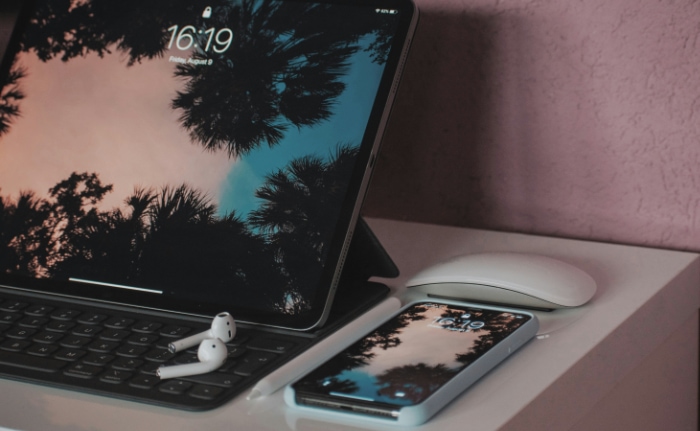Tablet vs. Smartphone: Efficiency or Mobility?

Mobile devices have become essential tools in our daily lives, seamlessly integrating into everything from work and education to entertainment and communication. As technology advances, the line between tablets and smartphones becomes increasingly blurred, each offering distinct advantages and specialized features to cater to a wide array of user needs.
Design and Portability in Mobile Devices
Mobile devices, particularly tablets and smartphones, are central to the digital experience, offering a range of functionalities encased in various designs. These devices cater to different preferences and requirements, where the choice between a tablet and a smartphone often hinges on their physical attributes and how users plan to incorporate them into their lives.
Size and Weight
Tablets and smartphones offer distinct physical dimensions that cater to varied user needs. Smartphones, typically smaller and lighter, are designed for one-handed use and ease of portability.
Their compact size ensures they fit comfortably in pockets or small bags, making them ideal for on-the-go communication, quick internet searches, and using apps.
On the other hand, tablets boast larger screens, which, while enhancing viewing pleasure and making interactions more immersive, also result in a bigger, heavier device. This size difference means tablets are better suited for activities where a larger display is beneficial, such as watching videos, reading, or using productivity applications.
However, this comes at the cost of portability, as tablets require more space for transport and often need a bag or case.
The Impact of Portability on User Choice
Portability plays a significant role in determining whether a tablet or smartphone best suits an individual’s lifestyle. For users frequently on the move, such as commuters or travelers, the compactness of a smartphone makes it an indispensable tool.
It’s easily accessible and convenient for capturing photos, staying connected, or navigating unfamiliar locations.
Conversely, for those who prioritize leisure activities like gaming, streaming, or e-reading, or who need a device for work that demands a larger screen for productivity tasks, a tablet may be the preferred choice despite its reduced portability. Tablets offer an enhanced visual experience and a more comfortable format for extended use, which is particularly appealing for long flights, hotel stays, or relaxed home use.
Display Characteristics and User Experience
The visual component of mobile devices significantly influences our interaction with technology, shaping everything from casual browsing to complex work tasks.
Screen Size and Resolution
The dimensions and display quality of a device play crucial roles in determining its suitability for various tasks. Smartphones, with their smaller screens, offer convenience and portability but often come with limitations when displaying detailed images or multitasking.
Despite these limitations, advances in smartphone technology have led to higher resolutions, ensuring that even on smaller screens, the clarity and detail of the content remain exceptional.
Tablets, with their larger screens, provide a broader visual field, making them ideal for activities that benefit from a larger display area. Whether it’s editing photos, reading digital books, or watching videos, the increased screen real estate enhances visibility and interaction.
Higher resolutions on tablets further refine the visual experience, rendering sharp and vibrant images that are particularly noticeable when viewing high-definition content.
User Interface and Experience on Different Screen Sizes
The user interface (UI) design of mobile devices adapts to the size of the display, optimizing user interaction and accessibility. On smartphones, UI elements are typically designed to be easily navigable with one hand.
Menus, buttons, and other interactive elements are positioned within reach of the user’s thumb, facilitating ease of use during mobility or when the other hand is occupied.
Tablets offer a different experience, utilizing their larger screens to display more content simultaneously and provide a more immersive interaction. The UI on tablets is optimized for two-handed use or interaction with a stylus, offering a layout that takes advantage of the additional space for detailed apps, complex games, and multitasking.
This difference becomes evident in applications that require precision and space, such as graphic design software, spreadsheets, and educational tools, where the expanded display area allows for a more comprehensive and less cramped interface.
Performance and Hardware Specifications

The heart of any mobile device lies in its performance capabilities and hardware components. These elements define the efficiency, speed, and overall experience of using the device for various tasks, from basic to demanding.
Processing Power, Memory, and Storage
High-end smartphones and tablets are equipped with advanced processors that enable rapid multitasking, quick app launches, and smooth gameplay. The latest models often feature chipsets designed for high efficiency, balancing power consumption with performance to accommodate the compact size of smartphones.
In contrast, tablets, with their larger form factor, can house more robust hardware, allowing for slightly enhanced performance levels that are particularly noticeable in resource-intensive tasks like video editing or 3D rendering.
Memory (RAM) plays a significant role in how smoothly a device can run multiple applications at the same time. High-end smartphones and tablets now come with RAM that rivals that of some laptops, ensuring that switching between apps and keeping them running in the background is seamless.
Storage options also vary significantly between smartphones and tablets, with high-end models offering substantial onboard storage capacities. Tablets tend to offer more generous storage options, catering to the needs of users who store large files such as movies, games, and work documents.
Camera, Battery, and Connectivity
The camera quality in mobile devices has become a critical factor for many users. Smartphones, in particular, have focused on advancing camera technology, offering features like multiple lenses, high-resolution sensors, and sophisticated software enhancements.
These improvements cater to users who prioritize photography and videography. Tablets have also improved in this area but generally lag behind smartphones due to the latter’s emphasis on camera technology as a primary selling point.
Battery life is another pivotal aspect, with usage patterns heavily influencing battery consumption. Smartphones are designed to optimize power usage efficiently, often resulting in a full day’s use on a single charge, despite their smaller battery sizes compared to tablets.
Tablets, benefiting from larger physical dimensions, can accommodate bigger batteries, offering extended use times which is particularly advantageous for video streaming, gaming, or productivity tasks.
Connectivity options such as Wi-Fi, Bluetooth, and cellular networks are integral to the functionality of both device types. High-end smartphones and tablets usually support the latest standards, providing fast and reliable connections.
Tablets with cellular options offer added versatility for on-the-go internet access, though this feature is more commonly associated with smartphones.
Optimal Use Cases for Tablets and Smartphones
Mobile devices have carved out significant niches in our daily routines, with each device type catering to specific activities and preferences.
Preferred Activities for Smartphones
Smartphones excel in tasks that require connectivity, portability, and immediacy. Their compact size makes them ideal for communication, whether through calls, texts, or social media.
Quick internet searches, mobile banking, and the use of various apps for daily services like transportation and food delivery are more convenient on smartphones due to their always-on, always-with-you nature. For capturing life’s moments, smartphones are unparalleled, thanks to their high-quality cameras and ease of sharing content online.
These devices are perfectly suited for the fast-paced digital life, providing a gateway to the world’s information and social connections in a pocket-sized form.
Tablets as a Preferred Choice for Extended Use
Tablets offer an enhanced experience for content consumption and creation, thanks to their larger screens. Reading, whether it be ebooks, articles, or digital textbooks, is more comfortable on a tablet’s spacious display.
For learning and multimedia use, including video streaming and gaming, tablets provide an immersive experience that smartphones cannot match. They also serve as powerful tools for creative work, such as digital art, music production, and video editing, where the larger touch interface enables detailed work and better control.
In educational settings, tablets can transform into interactive textbooks, offering a dynamic learning environment that encourages engagement and understanding.
The Convergence of Technologies: Hybrid Devices
The advent of hybrid devices and emerging technologies is gradually blurring the line between tablets and smartphones. Devices like foldable smartphones and tablets with detachable keyboards are creating a new category that combines the portability of a smartphone with the enhanced functionality of a tablet.
These hybrids offer versatile options for users, adapting to a range of tasks from productivity to entertainment. As technology advances, we’re seeing a trend towards devices that can serve multiple purposes, offering the convenience of a smartphone when on the go, and the expanded capabilities of a tablet when needed for more intensive tasks.
Evaluating Costs of Tablets vs. Smartphones
Smartphones and tablets are available across a wide price range, catering to various budgetary constraints and user requirements. Entry-level smartphones can be quite affordable, offering basic functionality suitable for those primarily interested in communication and simple apps.
On the other hand, premium smartphones boast advanced features like high-resolution cameras, large storage capacities, and powerful processors, appealing to tech enthusiasts and professionals who demand top performance and the latest technology.
Tablets follow a similar pricing strategy, with budget models available for casual use, such as web browsing, reading, and streaming media. These models are particularly attractive for families, educational institutions, and individuals looking for a secondary device.
High-end tablets, equipped with powerful hardware and specialized features like stylus support and keyboard attachments, target professionals and creatives who use their device for work and intensive tasks.
Ownership and Maintenance Costs
Beyond the initial purchase price, the cost of owning and maintaining a mobile device includes accessories, repair fees, and potential service charges. Accessories like protective cases, screen protectors, styluses, and keyboards enhance the device’s functionality and longevity but also add to the overall cost.
Premium accessories from the device manufacturer or reputable third-party brands often carry a higher price tag but offer better compatibility and quality.
Repair costs vary significantly between devices and manufacturers, with screen replacements and battery issues among the most common repairs. High-end smartphones and tablets, especially those with glass bodies and edge-to-edge displays, can be more expensive to repair.
Opting for insurance or warranty plans can mitigate these costs but requires an additional upfront or monthly investment.
Resale value is another financial aspect to consider. Premium devices from well-known brands typically retain their value better than budget models, offering a higher return when upgrading to a newer model.
The condition of the device, demand for the model, and market trends also influence the resale price.
Conclusion
From design and portability to display quality, performance capabilities, software ecosystems, specific use cases, and cost considerations, both devices cater to diverse needs and preferences. While smartphones excel in communication, quick tasks, and portability, tablets offer superior experiences for content consumption, creative projects, and learning, thanks to their larger screens and enhanced multitasking capabilities.
Emerging hybrid technologies further blur the traditional boundaries, introducing versatile options that combine the best of both worlds. The decision between choosing a tablet or a smartphone—or perhaps a device that straddles both categories—ultimately rests on an individual’s daily activities, specific requirements, and personal taste.
We encourage readers to reflect on their digital habits and what they seek to achieve with their technology. Whether it’s staying connected, engaging in creative work, or simply enjoying media, the vast ecosystem of personal technology has something for everyone.


